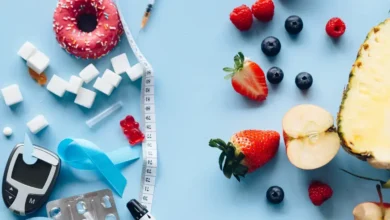Childbearing Age: Pros and Cons of Getting Pregnant in Your 20s, 30s, and 40s

“The Ideal Age for Having a Child” – this title makes the woman appear as the central figure in pregnancy and childbirth. Yet children are not born just so that a woman may experience motherhood. Children are born to become NEW HUMAN BEINGS on Earth. In fact, children themselves are the main characters in the phenomenon of reproduction.
The psychological, social, and personal aspects I leave to specialists in those fields. Here, I will speak only in the space of human biology.
From the Perspective of the True Main Character – the Future Child
So, let us look at this question from the viewpoint of the true main character in the process – the FUTURE CHILD – because it is for them that the mother sincerely wishes the very best.
In the ideal case, everything begins almost like a fairy tale, in perfectly favorable order:
- The woman is sexually active, completely healthy, and all her internal organs function without abnormalities.
- She has no harmful habits. Physical activity is moderate. Her diet is balanced and wholesome.
- The menstrual cycle is regular like clockwork.
At the right biological moment, one of her healthy eggs gently leaves the ovary, enters the fallopian tube, and immediately meets a group of normal sperm cells. Fertilization occurs, and the very first cell of a NEW human organism – the ZYGOTE – is formed.
At the same time, the ovary activates the corpus luteum to maintain pregnancy in its first months. The mammary glands begin preparing for future lactation. The zygote starts its journey along the healthy fallopian tube, whose muscles help move it safely. The chromosome set proves viable, and within seven days, this single cell multiplies into a small cluster of cells – the MORULA.
The morula then differentiates: outer cells prepare for implantation, producing human chorionic gonadotropin, while inner cells separate into two groups – embryonic (to form the embryo) and yolk (to nourish it). This becomes the primary embryo.
The healthy uterus welcomes it, the endometrium provides nutrients, and the pregnancy begins. The woman notices her period is late, takes a test, and learns she is pregnant. The FUTURE CHILD continues to grow, organs form, the placenta supplies oxygen and nutrients, and the mother’s healthy systems support the process.
When birth arrives, the strong uterus ensures natural delivery. Everything ends ideally – with normal childbirth.
The biological conclusion: for pregnancy to begin, develop, and end successfully, many systems of the body must work together in balance. This is a great effort. That is why repeated pregnancies are recommended at intervals of at least 4–5 years to restore resources.
Pregnancies Before Age 18
Although every woman sees childbirth as her personal choice, on a global scale the birth of children is the only way to preserve humanity. The period of life when a woman can conceive and carry a child is called the reproductive period.
The best conditions for conception and healthy development are found in a young, healthy female body. Statistically, reproductive organs complete their development only by age 18. Pregnancies occurring earlier carry higher risks due to immaturity of the reproductive system.
The Main Reproductive Period: 19–28 Years
In this phase, the ovaries contain many high-quality eggs, ovulation occurs regularly, and the organs are full of reserves. Fallopian tubes and uterine tissues are elastic and strong.
- Within the first year of trying, there is an 84% chance of conception.
- Infertility rates: 6% at age 24, 9% at age 29.
- Global statistics show the highest number of successful pregnancies at age 26, often called the “peak of reproduction.”
Using modern tools such as the ovulation tracker machine OVUL, women in this age group can further optimize their chances by tracking ovulation precisely.

Late Reproductive Period: 29–39 Years
The number of eggs decreases quickly, and their quality declines. Ovulation does not occur every month. Tissues lose elasticity and strength, and the risk of complications rises.
- By age 36, statistics show a sharp drop in successful pregnancies – the “reproduction threshold.”
- Infertility rates: 9% at 29 years, 30% at 36 years.
- By 38 years old, chances of conception within three years fall to only 7%.
These processes cannot be stopped by sports, diets, or lifestyle changes. They depend on biology, although harmful habits or infections can accelerate reproductive aging. Regular cycle monitoring and saliva fertility testing can help detect fertile windows even when ovulation becomes irregular.
Conscious Choice and Medical Help
Every woman who desires children has the right to consciously choose when to attempt pregnancy. It is crucial to understand the real relationship between age and biological potential. Medical research can now assess this individually.
Reproductive technologies make pregnancies possible even at later ages or with health issues, though the process is far from easy.
Attempts to conceive are defined medically as unprotected intercourse every 2–3 days over a certain period:
- Up to age 30: up to 2 years of attempts without worry.
- After 30: no more than 1 year.
- For subsequent pregnancies: 6 months regardless of age.
If pregnancy does not occur within these timeframes, the couple is classified as infertile and requires examination.
Final Thoughts
Pregnancy is increasingly planned and conscious today, which is a positive trend. Yet unplanned pregnancies also happen – and often bring joy. In every case, it is best to consult a doctor before trying to conceive, ideally one year in advance, or two years if past problems occurred.
Preparation may include correcting health issues, updating vaccinations, adjusting lifestyle, and ensuring the body is ready. Once pregnancy begins, medical interventions are limited, so prevention is crucial.
There may be few “fairy-tale perfect” pregnancies, but the goal is always the same: to ensure that for the true main character – the FUTURE CHILD – everything unfolds in the best possible way.




